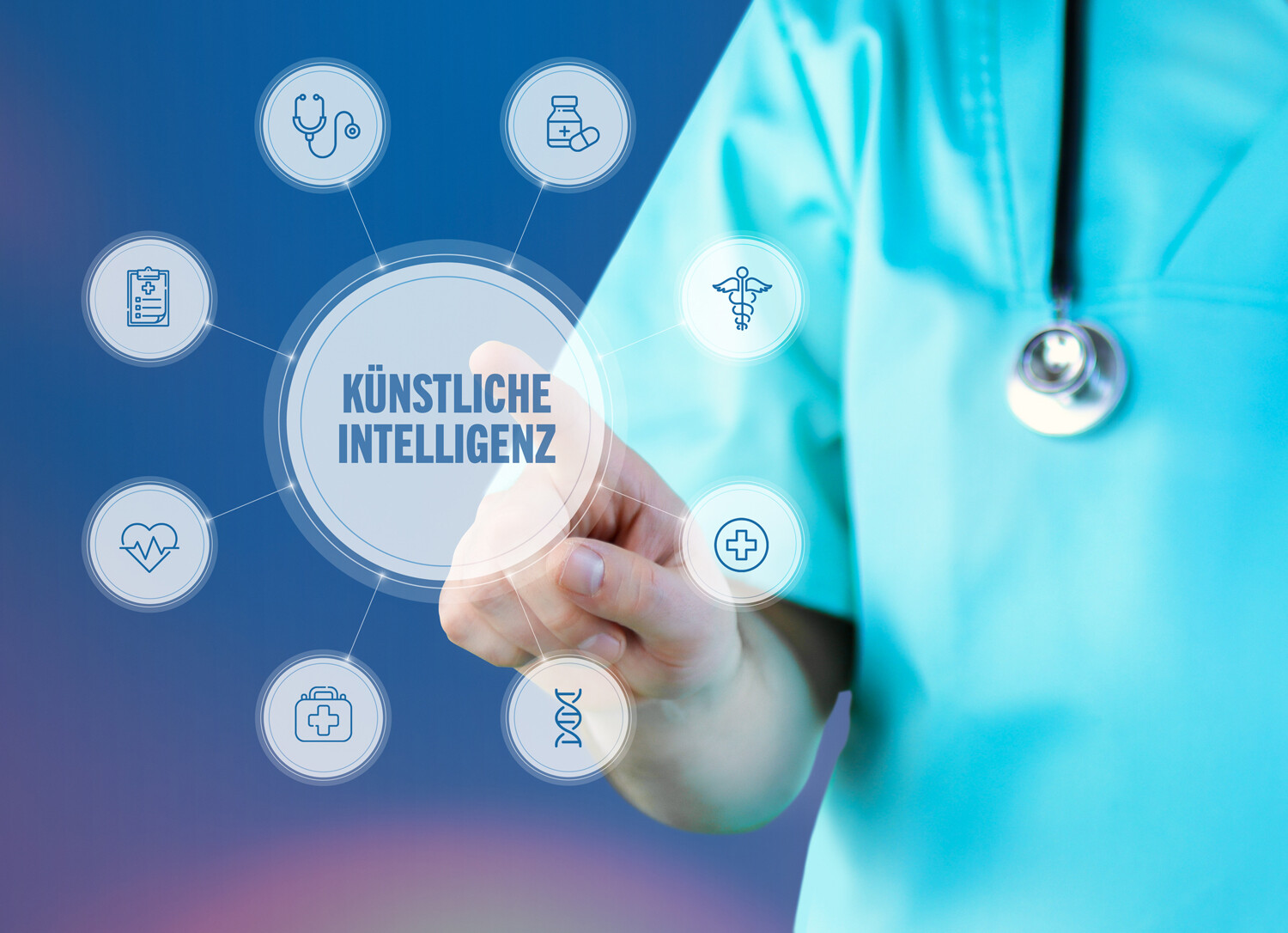
Researchers at Harvard University and the University of Copenhagen have unveiled an artificial intelligence that can detect patients at risk for pancreatic cancer. Pancreatic cancer has no detectable symptoms. As a result, this type of cancer is difficult to diagnose and is particularly deadly.
It's good news for cancer research and shows the value of digital health apps. As reported by the medical portal "Handelsblatt Inside Digital Health," researchers from Harvard University and the University of Copenhagen presented an artificial intelligence at the current annual meeting of the American Association for Cancer Research (AACR) that can identify patients at risk for pancreatic cancer. The algorithm was developed using several million patient records from Denmark. According to "Handelsblatt Inside Digital Health," the researchers succeeded in creating the AI model because they worked with data from electronic patient records. "Every day, a lot of data about people's health status accumulates. With this information, scientists can learn more about diseases to improve therapies for patients."
The significance of this discovery increases when one realizes that the extremely risky pancreatic cancer has no identifiable symptoms and is therefore difficult to diagnose. "Pancreatic cancer, also called pancreatic carcinoma, can in principle occur in any part of the organ. The head portion of the pancreas is most commonly affected. Pancreatic cancer is relatively rare, accounting for about three percent of all cancers in Germany, but it is particularly malignant," says the ONKO Internet portal, which is associated with the German Cancer Society.
As good as all sufferers of pancreatic cancer die of the disease
And the Robert Koch Institute informs, "In 2018, about 19,020 people developed pancreatic cancer (pancreatic carcinoma). Due to the unfavorable prognosis, almost as many people also died from this disease. Since the late 1990s, age-standardized disease and death rates have increased slightly, especially in the older age groups of 65 years and older. The absolute number of new cases and deaths has steadily increased for both sexes over the years, partly due to demographic trends."
Speaking of difficult diagnosis: according to "Handelsblatt Inside Digital Health," physicians should use the software with high-risk patients to find the malignant tumor in time. That's because pancreatic cancer is often diagnosed too late. Thomas Seufferlein is the medical director of the University Hospital in Ulm and reports that, as soon as patients learn of their fate, they will survive for another 50 months in the very best case. The reason for this is, on the one hand, that symptoms only appear when the tumor can no longer be surgically removed. On the other hand, there are also no good technologies to see the cancer in its early stages, he said. "Modern imaging methods often cannot detect the tumor in time," Seufferlein says in the report by "Handelsblatt Inside Digital Health."
Artificial intelligence has a high value
Artificial Intelligence seems really smart, the potential huge. Patients who have been classified as positive by the AI are 25 times more likely to actually develop pancreatic cancer within the next three to 36 months. Specifically, "The so-called sensitivity is 12.3 percent. This means that out of 100 patients, the AI can detect around twelve who have actually developed pancreatic cancer in the specified period. At 99.88 percent is the specificity, which means that almost all people are correctly classified as healthy."
So while artificial intelligence can detect pancreatic cancer, which has been difficult to diagnose until now, at an early stage or indicate the risk of developing the disease, we can prevent other types of cancer ourselves. This includes colon cancer, for example. This prevention can be promoted by sufficient dietary fiber. Dietary fibers are largely indigestible food components, mostly carbohydrates, which are mainly found in plant-based foods. They are found above all in cereals, fruit, vegetables, legumes and, to a lesser extent, in milk. Dietary fiber is thus an important component of the human diet.
Lack of dietary fiber a high risk factor
The German Nutrition Society (DGE) recommends that adults eat 30 grams of dietary fiber a day. They can easily achieve this amount by including five servings of fruit and vegetables/legumes, one serving of cereal flakes, two to three slices of wholemeal bread and one serving of potatoes, wholemeal pasta or brown rice in their diet. According to the "National Consumption Study II" published by the Max Rubner Institute, cereal products are the most important source of dietary fiber for Germans at 41 percent, ahead of fruit (21 percent) and vegetables (16 percent).
Studies show that a lack of dietary fiber is a risk factor for obesity, diabetes, high blood pressure, heart attacks and other ailments. Digestion suffers, and hemorrhoids and constipation can result. Many diseases could be cured with sufficient dietary fiber or would not arise in the first place. Especially for gastrointestinal health and digestion, dietary fiber is indispensable.
Dietary fiber as a preventive measure against colon cancer
According to the Baden-Württemberg State Center for Nutrition at the State Institute for Agriculture, Nutrition and Rural Areas (LEL): "[Dietary fibers] ensure that food stays in the stomach longer and thus promote the feeling of satiety. They bind water in the intestine and thus ensure an increased stool volume. The resulting increased stimulus on the intestinal wall stimulates intestinal motility, thus shortening the residence time of the food in the intestine. This also means that carcinogenic substances do not have long to come into contact with the intestinal mucosa. This is the reason for the protective effect of dietary fiber against colon cancer. Due to the water-related increased stool volume, the stool consistency improves and constipation occurs less frequently. The prerequisite is an adequate fluid intake. Dietary fiber binds bile acids and removes the cholesterol they contain from the body. The body has to produce new bile acids and needs cholesterol to do so, which in turn lowers cholesterol levels. Scientific studies have shown that high-fiber meals lead to a reduction in blood sugar levels in diabetics. The reason for this is that fiber delays the absorption of carbohydrates from the intestines into the blood. Positive colon bacteria need soluble dietary fiber as food and break it down almost completely into short-chain fatty acids. These serve as an energy supplier to the colon mucosa and maintain the barrier function against harmful germs."
Our Natura Vitalis product "Digezyme" contains a unique, patented multi-enzyme complex that can provide additional positive support for digestion in a variety of ways. The enzymes alpha-amylase, protease, lactase, lipase and cellulase help especially in the digestion of cellulose (fruits and vegetables), fats, lactose (milk, yogurt, cheese, etc.) proteins, starch and carbohydrates. The special feature of "Digezyme" is that the enzymes it contains are dosed in a very specific ratio to each other to provide the best possible support for the digestion of nutrients such as proteins, carbohydrates, fats and fiber.
This text may contain translation errors as the translation was done by an online translation tool.










